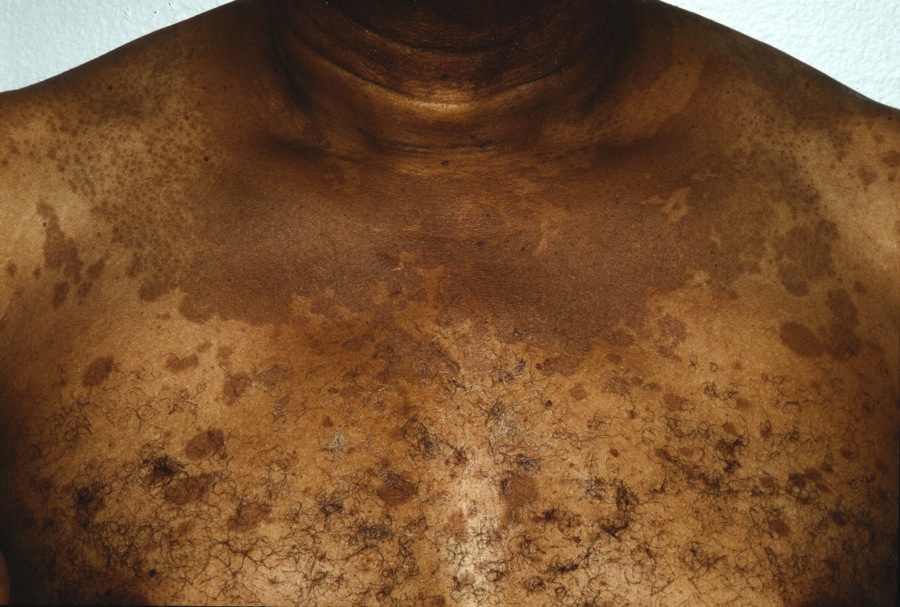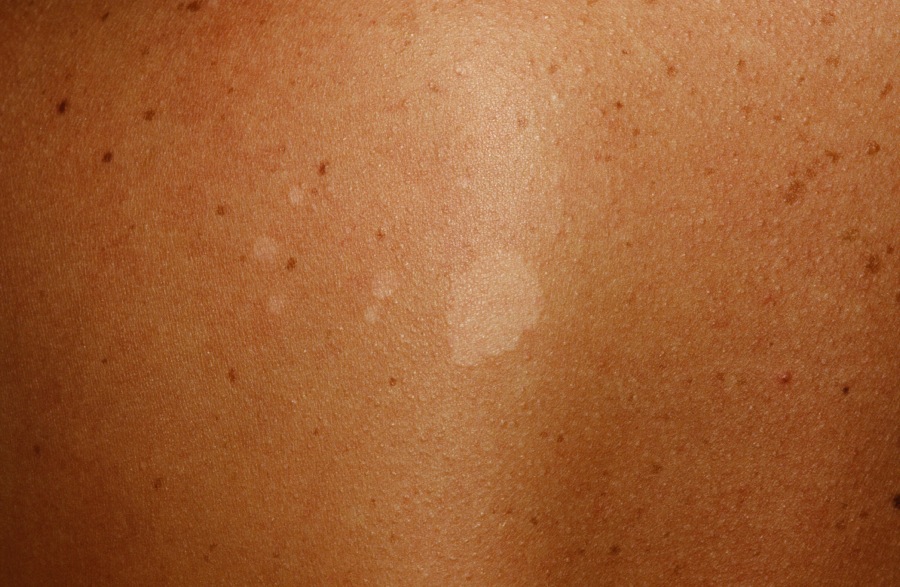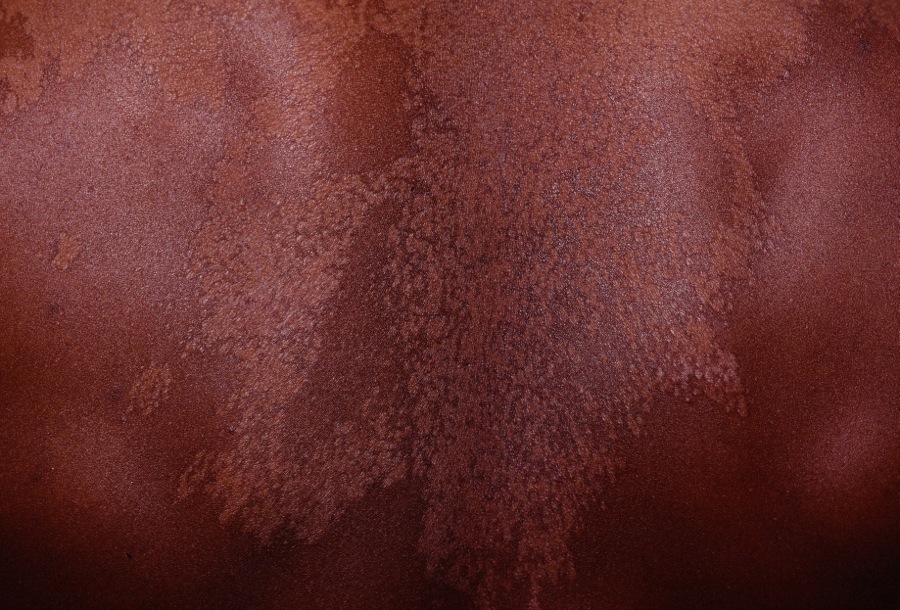
Hyperpigmented patches.
TINEA VERSICOLOR
Tinea (pityriasis) versicolor (TV) is a superficial infection of the stratum corneum by the lipophilic fungus known as Malassezia furfur (formerly pityrosporum). The most common predisposing factor is excessive sweating but others include application of oils and systemic steroids.
- A superficial infection by the fungus Malassezia of the trunk, usually in young people with oily skin.
- Treatment is straightforward but maintenance is key as recurrences are common.
- Wood's light illumination shows a characteristic golden-yellow fluorescence.
- Oral ketoconazole should NOT be used as treatment for TV per the FDA--due to risk of severe hepatitis.
Clinical
The trunk is affected with brown, white, or pink, slightly scaly patches and very thin plaques. If no scale is appreciated, gentle scraping easily generates fine scale. Rarely, TV can affect other locations including the groin, sides of the neck and face. Atrophic lesions may occur. Folliculocentric TV has been reported.
Fluorescence
Malassezia fluoresces yellow-green with black (Wood's) light. In a study of 28 patients, 23 (82%) fluoresced positive with Wood's light. Positive KOH is the gold standard for diagnosis, but Wood's light is a rapid and inexpensive confirmatory tool.

Hypopigmented Patches

Many hypopigmented macules in a darker skinned patient.
RegionalDerm
Homepage | Who is Dr. White? | Privacy Policy | FAQs | Use of Images | Contact Dr. White
It is not the intention of RegionalDerm.com to provide specific medical advice, diagnosis or treatment. RegionalDerm.com only intends to provide users with information regarding various medical conditions for educational purposes and will not provide specific medical advice. Information on RegionalDerm.com is not intended as a substitute for seeking medical treatment and you should always seek the advice of a qualified healthcare provider for diagnosis and for answers to your individual questions. Information contained on RegionalDerm.com should never cause you to disregard professional medical advice or delay seeking treatment. If you live in the United States and believe you are having a medical emergency call 911 immediately.

